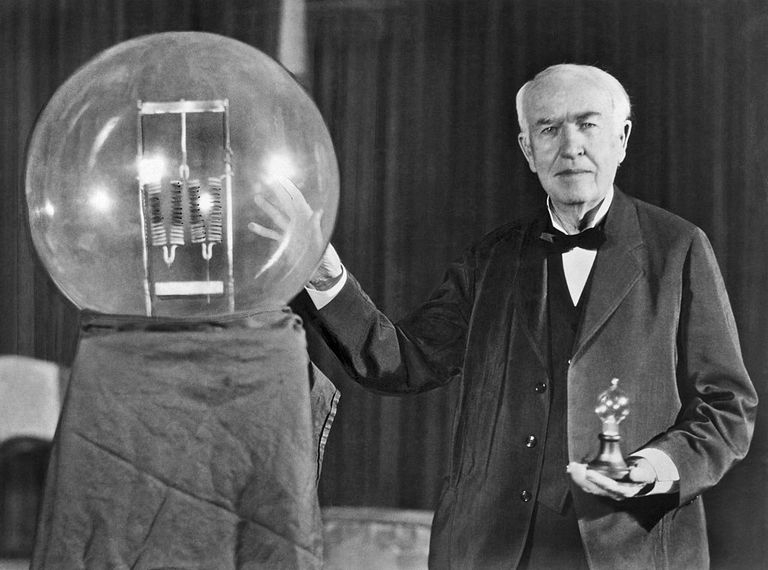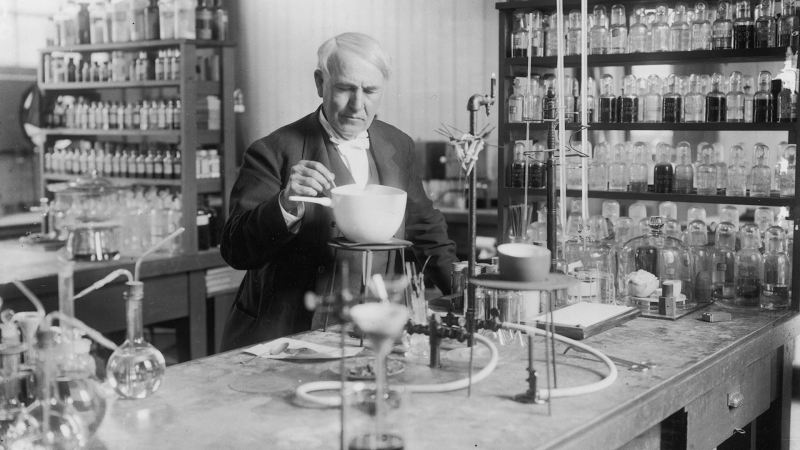Thomas Edison

Thomas Edison (1847-1931) was an American inventor and businessman who created and commercialized several important technologies of contemporary life. His Edison Electric firm was a pioneer in bringing direct current power straight into people's homes. He obtained nearly 1,000 patents for various technologies. Most importantly, he developed mass-production techniques to make his ideas affordable to households across America. His most notable innovations are the electric light bulb, phonograph, motion picture camera, electric car, and electric power plant.
Edison has always enjoyed experimenting, particularly with chemicals. These efforts, however, frequently landed Edison in hot water. When working on a night shift at Western Union, his lead-acid battery poured sulfuric acid through the floor onto his boss' desk after a science experiment detonated on the train. The next day, Edison was dismissed.
Despite scraping by in poverty conditions for the next few years, Edison was able to devote the most of his time working on innovations. On June 1, 1869, he got his first patent for the stock ticker. This would subsequently net him a sizable fortune.
In the 1870s, he sold the quadruplex telegraph rights to Western Union for $10,000. This provided him with the financial resources he needed to build a proper research facility and expand his trials and ideas. Edison once described his inventing processes as requiring a great deal of hard effort and trial and error before a method was successful.
By 1877, he had invented the phonograph (an early predecessor of the gramophone player), which sparked considerable attention and awe as one of the earliest audio recording technologies. This one-of-a-kind invention earned Edison the moniker "The Wizard of Menlo Park." Others will eventually improve on Edison's system, but he made a significant step forward in developing the first recording device.
Edison began making the electric light bulb with William Joseph Hammer, and it was a huge commercial success. Edison's breakthrough was the use of a carbonized bamboo filament that could survive for more than 1,000 hours. To capitalize on his discovery, he established the Edison Electric Light Company in 1878. Edison correctly prophesied that he could produce electric light so inexpensive that it would soon become widespread. He focused on power distribution to capitalize on the success of the electric light bulb. His initial power station could supply direct current to 59 clients in lower Manhattan.
Edison's studios now occupied two blocks and could stock a vast array of natural materials, implying that nearly anything and everything could be used to better designs. This was a major reason in Edison's success throughout this period of innovation.
During the early days of electricity generation, Edison was embroiled in a conflict between his direct current (DC) method and George Westinghouse's AC (alternative current) system (and developed by Nikola Tesla, who worked for Edison for two years before leaving in a pay dispute.)
Edison was also a big fan of Enlightenment theorist Thomas Paine. In 1925, he published a book praising Paine; he also held similar theological ideas to Thomas Paine - no specific religion, but believed in a Supreme Being.
Edison created numerous significant media inventions and developments. The Kinetoscope (or peephole view), the earliest motion movies, and improved photographic paper were among them.
In West Orange, he became acquainted with Henry Ford, the industrial billionaire, and was an active member of the Civitan society, which involves doing things for the local community. His rate of invention dropped in his final years, although he kept occupied with projects like trying to find a home source of natural rubber. He was also a part of the first electric train to leave Hoboken in 1930.


























